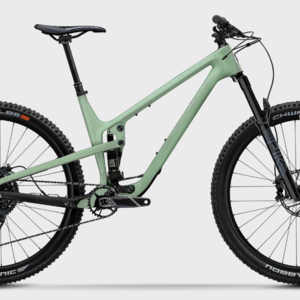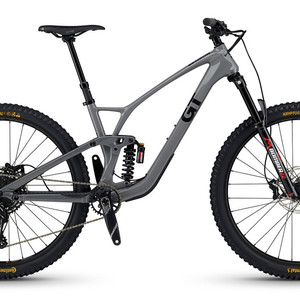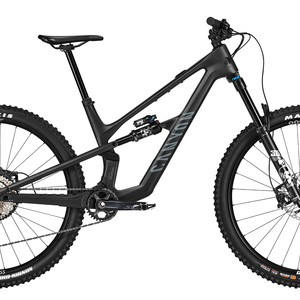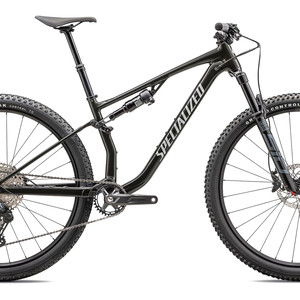2014 BH Lynx 6 27.5
(discontinued)
| Where To Buy | |||
|---|---|---|---|
Free shipping on orders over $50 (continental U.S. only).
International shipping available. Some exclusions apply. |
|||
Free shipping on orders over $50 (continental U.S. only).
International shipping available. Some exclusions apply. |
|||
Reviewed by Evan Turpen and Brandon Turman // Photos by Shawn Spomer and Lear Miller
While the BH Bikes brand may be a new name to riders in North America, they’ve actually been creating finely crafted bikes for more than 100 years. The Lynx 6 is the Spanish company's all-mountain/enduro bike designed for aggressive riders seeking slack angles and great suspension performance via Dave Weagle’s well regarded Split Pivot system. For 2014 the bike comes in the 27.5-inch (650b) wheel variety at a reasonable price of $3,499. We spent some time aboard the Lynx 6 in Arizona during the 2014 Vital MTB Test Sessions. Let’s see how it performed.

Lynx 6 Highlights
- Hydroformed alloy frame
- 27.5-inch wheels
- 5.9-inches (150mm) rear wheel travel
- Split Pivot suspension design
- Tapered head tube
- 67-degree head angle
- 73-degree seat tube angle
- 13.2-inch (335mm) bottom bracket
- 16.9-inch (430mm) chainstay length
- Press Fit 92 bottom bracket with ISCG 05 mounts
- 142mm x 12mm thru-axle
- Measured weight (size Medium, no pedals): 31-pounds 7-ounces (14.3kg)
- $3,499 MSRP
The BH Lynx 6 is unique in that it utilizes DW’s Split Pivot suspension design in combination with a floating shock mount, meaning the shock is compressed between both the chainstay and the rocker link. The shock is situated low in the frame in an opening created by a break in the seat tube. BH is the only European brand making use of the Split Pivot design, in which the 142x12mm thru-axle and rear pivot are concentric.

According to Weagle, “Split Pivot separates the acceleration forces from the braking forces caused by the suspension, thus reducing the excess compression of the suspension under acceleration - anti squat, and at the same time, reducing the excess compression resulting from the braking forces.” The bike has a progressive leverage curve through the majority of the 150mm of travel.
Unique hardware at the rear pivot uses a cassette tool instead of wrench flats or allen wrenches to tighten, and Enduro brand bearings are used throughout the linkage. The lower suspension pivot assembly and Press Fit 92 bottom bracket are made from two halves that are welded together. While the short 16.9-inch chainstays are greatly appreciated, they come at the expense of mud clearance - there’s less than a centimeter of room for the muck with the stock 2.35-inch Schwalbe tire.

Additional details include a tapered headtube, direct mount front derailleur, ISCG 05 mounts for an optional chainguide, and plenty of room for a water bottle inside the front triangle. The post mount rear brake uses replaceable hardware should you accidentally cross-thread a mounting bolt.
The rear derailleur cable routes through the chainstay, reducing the chance of damage from the chain. Both the front and rear derailleur cables are routed internally through the front triangle. Rear brake routing remains external for ease of maintenance. Cable guides are included for a dropper post should you decide to add one.
In Europe, the Lynx 6 is available with two build kits designated as the 8.5 and 8.7. One model is available in the USA with a slightly different spec and a $3,499 price tag.
On The Trail
To put the Lynx 6 through its paces we headed out to the Black Canyon Trail about an hour south of Sedona, Arizona. We rode two sections of the 78-mile trail that had a good variety of technical rocky bits, high-speed corners, dozens of punchy climbs, and a few very fast, aggressive descents.
Before hitting the trail we replaced the longish 80mm stem and narrow 26.5-inch bars for a short 50mm stem and 29.5-inch bars, which were much more in line with the bike’s intentions and capabilities.
The moderately slack 67-degree head angle, low 13.2-inch bottom bracket height, and short 16.9-inch (430mm) chainstays were very close to ideal numbers for this style of bike, offering a lively yet capable ride. While the effective seat tube angle is a reasonable 73-degrees, the actual seat tube angle is very laid back, and we ended up liking the feel more after sliding the seat all the way forward in the rails. The 17.3-inch seat tube height might be too short for some with the stock seatpost, as both of our 5’10” testers were just beyond the recommended maximum seatpost height.
On paper, the 24.2-inch (615mm) top tube length is quite long for the size Medium we tested, but because we slid the seat forward it felt average in the length department while seated. If anything, we’d like to see a slightly longer front end to add more downhill stability and a steeper seat angle for improved climbing performance. Unfortunately Reach and Stack measurements aren’t published.

Pointed downhill, the Lynx 6 is a very fun bike to ride. It’s not quite as stable as others, but it’s very playful. It’s easy to hop around, jump, and pick the front end up over obstacles. The bike changes directions and corners well, too. Those who are aggressive and active will appreciate the superb front to back balance, and those who ride more casually will still find it to be enjoyable. The frame is plenty stiff for its weight, but doesn’t beat the rider up with over the top stiffness.
At 30% sag, rear suspension performance was impressive for the base model RockShox Monarch shock. The Lynx absorbs small bumps at the top of its stroke well. Chatter was absorbed well too, but where the Lynx really shined was when encountering g-outs, drops, and jumps. It had a very controlled feeling that seemed to use just the right amount of travel for the occasion. Once deeper in the travel square edge bumps are absorbed okay, but it felt like there may have been a little too much compression damping making square edges feel slightly harsh. Regardless, the rear end of the bike remained well composed and never hung up or spiked during our test, even under heavy braking.
The mid-range 140mm RockShox Sektor fork was the weakest link in the bike’s downhill performance. It was noticeably flexy compared to larger stanchioned forks and had relatively poor compression and rebound damping control, leading to a few slightly sketchy moments. The fork is equipped with a remote lockout lever which we never felt the need to use, and would have preferred a fork with effective external adjustments and no remote lockout.

The Lynx 6 is an extremely noisy bike when encountering rough sections, mostly due to the internal cable routing which rattles around inside the frame. A switch to external routing would fix this, although there are no external cable guide provisions except for the dropper.
While the bike claimed is to be in the 29-pound range, the actual weight is closer to 31.5-pounds. The heft can be felt on the trail as it adds stability, but we were pleasantly surprised by how quickly the bike rolled and maintained speed. Despite the weight the geometry and suspension makes the bike easy to maneuver.
Out of the saddle sprints are responded to well. The bike is efficient and has minimal perceivable bob or loss of power. Seated pedaling was also very efficient, although only in the largest of the double front chainrings. In the 24-tooth granny ring we felt there was a little too much pedal feedback.
From a suspension performance standpoint the bike climbs well and didn’t require the use of compression levers to achieve this. Technical climbs were managed well, but only while standing. There was plenty of traction at the rear wheel, but the seated riding position was too far back which created a front end that would wander and come up too easily. We had to fight to keep the front end down up steep climbs. The low bottom bracket (which helped the bike corner so well) became somewhat of a nuisance when pedaling through rocky terrain even while trying to be conscious of pedal timing.
Build Kit
Our $3,499 build included components from RockShox, FSA, Shimano, and BH. Save the stem, bars, and fork, we found the build to be pretty well suited to Arizona’s rough and rocky terrain. The addition of a dropper post would make it even more trail worthy.

Schwalbe’s 2.35-inch Nobby Nic tires worked decently well, though riders in demanding terrain and may want to replace the front tire. They excelled in deep loose conditions, but drifted too much on loose over hard terrain due to their tall knobs and harder PaceStar compound. The tires also showed major signs of wear after just a handful of rides.
The BH-branded wheels weren’t standout items as far as weight, stiffness, or width are concerned, but they got the job done without issue.
Shimano’s Deore brakes worked well especially given their low price point. They had excellent modulation with enough power to control the ride, but swapping the front 180mm and rear 160mm rotors for something larger would help if riding steep long descents often. The lever feel was excellent and consistent with no fade experienced.
The Shimano XT rear derailleur shifted flawlessly with no skipping, but was a non-clutch version which made the bike noisy and prone to dropped chains. We would have much rather seen a less expensive SLX derailleur with a clutch to match the rest of the SLX drivetrain. The chainstay and seat stay also come without any form of protection which adds a lot of chain-slap noise. Covering the chainstay and seat stays with strips of rubberized 3M mastic tape would solve this as would the inclusion of a rubber chainstay and seat stay protector from the factory.
Long Term Durability
The frame itself looks like it will far outlast most of the stock components, which is par for the course for most mid-range builds. One particular area for concern is how exposed the shock is to rear wheel debris. Another is how the external rear brake routing rubs the frame where it crossed the rear shock’s path, which could lead to leaky brake housing and frame wear.
BH backs the Lynx 6 frame with a limited lifetime warranty, provided you don’t the race the bike.

What's The Bottom Line?
The BH Lynx 6 has a great suspension design combined with neutral geometry that makes it easy to get used to, playful, and fun to ride. With a more carefully considered spec it could really come to life. The bike is very well balanced and remains composed through rough sections. Those seeking a versatile, well-rounded bike who occasionally ride more difficult trails will be at home on the Lynx 6. It excels on flowy trails with a mixture of short rough sections, jumps, turns, and terrain to pump. A slightly longer reach, steeper seat angle, and a few different components would take it to the next level. Not many bikes in this price range are perfect, but the heart of the Lynx 6 is a solid performer.
Visit www.bhbikes.com for more details.
Bonus Gallery: 26 photos of the 2014 BH Lynx 6 up close and in action
About The Reviewers
Evan Turpen - Evan has been racing mountain bikes as a Pro for the last 8 years with his career highlight being selected to represent the U.S. in the 2006 World Championships. More recently he can be found competing in enduro races and having a blast with it. He has helped design, develop, and test products for multiple major mountain bike companies and has an attention to detail well above most.
Brandon Turman - Brandon likes to pop off the little bonus lines on the sides of the trail, get aggressive when he's in tune with a bike and talk tech. In 14 years of riding he worked his way through the Collegiate downhill ranks to the Pro level. Formerly a Mechanical Engineer, nowadays he's Vital MTB's resident product guy.

Specifications
| Where To Buy | |||
|---|---|---|---|
Free shipping on orders over $50 (continental U.S. only).
International shipping available. Some exclusions apply. |
|||
Free shipping on orders over $50 (continental U.S. only).
International shipping available. Some exclusions apply. |
|||
























1 comments
Post a reply to: 2014 Test Sessions: BH Lynx 6